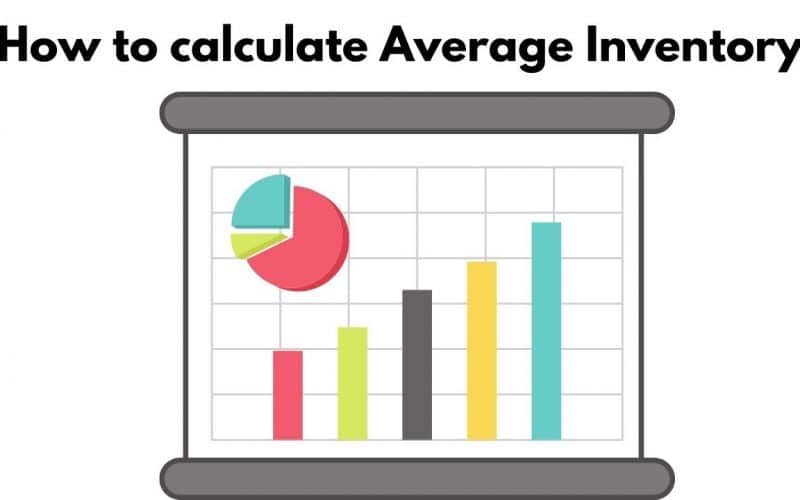Learning how to calculate average inventory is the first step to proper Inventory management. Without proper management, retail agents and warehouses can’t produce an accurate account of all the things they have in stock, which can be disastrous from a customer service perspective.
To calculate the days of inventory on hand, divide the average inventory for a carefully defined period by the corresponding cost of goods sold for the same period; multiply the result by 365. What then is an average inventory and how do you arrive at it. Let’s find out!
What is Average inventory?
Average inventory is a calculation that companies use to determine how much inventory they have over a period of time.
Many companies count their inventory at the end of the month, quarter, or other period. However, these numbers can be skewed slightly if a large shipment arrives or if you move a large inventory towards the end of that period.
The average inventory method takes an average over a period of time to get a clearer picture of how much inventory is typically available.
One of the advantages of using the Average Inventory Calculator is that when combined with sales reports, it is much easier to determine how much inventory a company needs to support sales. Too much or too little inventory can adversely affect your business and bottom line.
How to calculate average inventory
Now that we know what average inventory is and a better understanding of how companies use it, let’s talk about the actual formula you need to make this important calculation.
Average Inventory Formula
According to investopedia.org, the formula for average inventory can be expressed as follows:
Average Inventory = (Current Inventory + Previous Inventory) / Number of Periods
For example, let’s say your current inventory value is $20,000.
Your previous period’s inventory value was $40,000.
And we try to calculate the average inventory value for these two periods.
So the formula would look like this:
Average Inventory = ($20,000 + $40,000)/2
So we get $60,000 divided by two, which is $30,000.
Why Use Average Inventory Formula?
An average inventory formula can be beneficial for your business. This can help you better understand the amount of inventory you have and whether those amounts are too high or too low.
In addition, the average inventory formula will help you understand:
- Inventory losses due to shrinkage and theft
- Loss of inventory due to damage
- Total sales
- Loss of inventory due to expired product
- Stock turnover
These are just a few of the things that the average inventory formula can tell you. The values specified can affect your inventory management in many different ways.
When should you use the average inventory formula?
Now that understand how to calculate average inventory and why you should use it, let’s talk about when you should use the average inventory formula for your business.
#1. Stock sales ratio
One of the main reasons for understanding your average inventory level is to measure your inventory turnover. This is a measure of how fast (or how slowly) your inventory is moving, and it allows you to better understand how much inventory you need to have on hand at any given time.
The formula for this calculation is as follows:
Inventory turnover rate = (cost of goods sold / average inventory)
For this example, let’s take our average inventory of $20,000 from the previous example.
Let’s say the cost of goods sold is $100,000.
$100,000/ $20,000 = 5
Your inventory turnover rate is 5.
When asking if this is a good or a bad relationship it really depends on your company and the product you are selling. In general, higher odds indicate that you either have very strong sales of the product or you don’t have enough inventory to meet demand (and in some cases, both). Lower ratios mean that you are not selling much of the product or that you have too much inventory available.
#2. Average storage time
The next calculation in which the average inventory number is useful is to determine the average inventory period. Here is the formula to find that number.
Average inventory duration = (number of days in the period / inventory turnover ratio)
The purpose of this calculation is to help you better understand the time it takes to turn your inventory into actual sales. This calculation is also referred to as the average number of days in the inventory formula.
With the revenue ratio calculated above, we can create the equation. Here is an example of how it works:
Average inventory duration = (365/5).
In this example, the average inventory duration is 73 days.
How good a good average storage time again depends on your company and your product. However, it is helpful to understand how long items will be in your inventory if you plan to manage your inventory in the future.
Average Inventory Drawback
Like so many things in life, using the average inventory can be a boon to your business, but it’s not without its problems either.
Here are a few things to consider before using it.
Variations between monthly and daily sales
Since the average inventory formula mainly takes into account data for a variety of dates (months, quarters, or randomly selected sales periods), there can be a big difference between your daily inventory and inventory from larger time periods.
Likewise, many companies make their biggest sales effort at the end of a period, which can skew the numbers and give you the wrong idea of total sales and productivity.
This shouldn’t be taken as a reason not to use the average inventory formula, but it is something to keep in mind when doing so.
Does not take into account seasonal changes
If you have a business where sales can move with the seasons, average inventory levels can be misleading.
This is especially true of your inventory. As you step into your big season, you will undoubtedly have more inventory with you at the start of this period. Hopefully, by the end of the season, you’ll wear significantly less.
The broad nature of the formula really doesn’t take these seasonal variations into account. Again, this shouldn’t stop you from using average inventory numbers; instead, you should be aware of your numbers.
Relies on estimates
It doesn’t apply to everyone, but if your company uses the average inventory formula and it’s based on an estimated inventory balance rather than an actual number, it can confuse your numbers.
In this scenario, the problem occurs because your starting numbers are based on an estimate. This means that your average inventory (which is already an estimate) is based on an estimate. You can see where this might mess things up.
Again, this isn’t a deal-breaker when it comes to using the average inventory formula – just something to keep in mind in your calculations.
Moving average inventory
If you have inventory management software and a good point of sale system, consider using a moving average inventory system.
Because modern technology makes it possible to track inventory levels in real-time for every trade, a moving average inventory level can be automatically updated every time a sale is made.
Advantages of the moving average inventory approach include:
- Ability to compare inventory averages over multiple time periods
- Ability to better compare items with more volatile sales patterns
- It makes it much easier to calculate the average cost of goods sold.
Read our guide on how to get the FINANICAL STATEMENT OF A COMPANY.
What Is the Formula of Average Inventory?
Average inventory is calculated as follows: Average inventory = (Beginning inventory + Ending inventory) / 2.
Why Do We Calculate Average Stock?
Average stock, commonly known simply as “average,” is a method of calculating the amount of products on hand at any particular time. This form of calculation enables organizations to more accurately identify inventory levels without having to tally exact amounts each time.
Where Is Average Inventory on Balance Sheet?
The average inventory is recorded as an asset on the balance sheet.
What Is the Average Inventory?
Average inventory is a statistic that takes the average of inventory items over two or more accounting periods. Add the inventory counts at the end of each month and divide by the number of months to obtain the average inventory throughout a year.
Conclusion
To calculate average inventory:
- #1. Add the inventory on hand at the beginning of the year to the inventory on hand by year end and divide the result by 2.
- #2. Divide the company’s cost of goods sold for the year by the average inventory to figure the company’s inventory turnovers per year.
- #3. Divide the annual cost of goods sold by the number of days per year to find the inventory used per day. In this example, divide $12 million by 365 to get $32,876.71 of inventory per day.
- #4. Divide your inventory on hand by the inventory used per day to estimate your average days supply of inventory.
Inventory management is a crucial part of the success of every business. Using an average inventory calculation, you can better track inventory levels and flow in your company. Today we’re looking at what average inventory is and how the average inventory formula can help you better manage your business.






